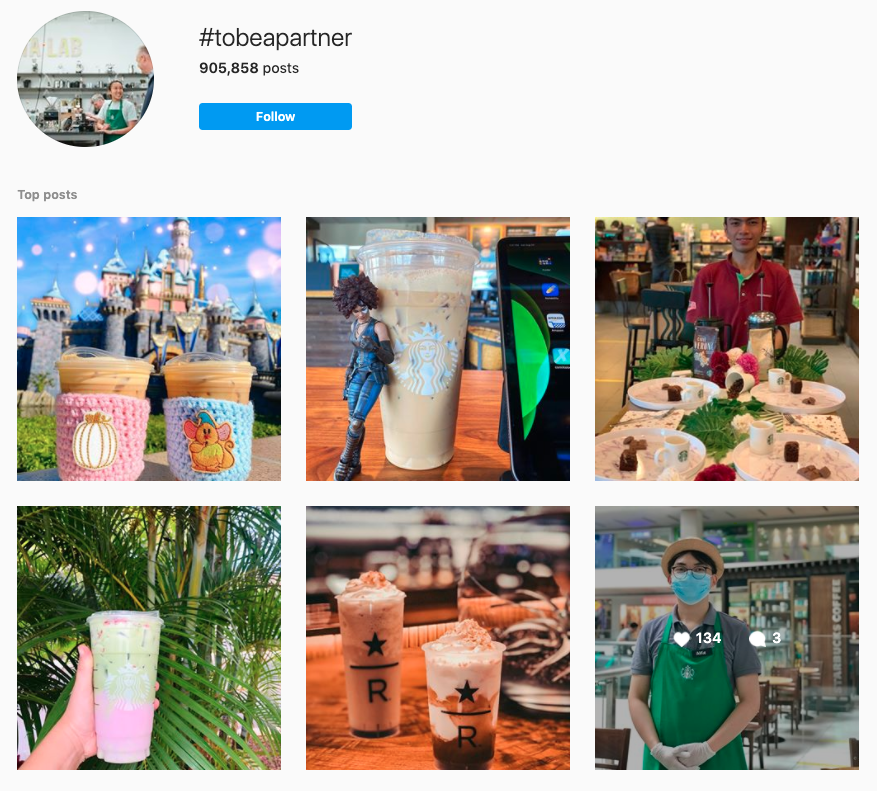The use of social media tools for business has grown in the past several years but brands have just begun to unlock its full potential.
Likely, your employees are already active on social media. They’re sharing, connecting and commenting already. The idea behind activating employees on social media, or called employee advocacy, is not new. It has been a social media marketing staple for years now.
The benefits of employee involvement on social media are undeniable:
- Branded content reach increased by 561% when shared by employees instead of company channels.
- 79% of firms surveyed reported more online visibility after the implementation of a formal employee advocacy program.
- Leads developed through employee social marketing convert 7x more frequently than other leads.
Beyond the benefits, there’s still a wide gap between social media engagement and spamming.
If your company offers a fantastic product or service that can help the lives of many customers, then your enthusiastic employees will want to talk about it. But with great enthusiasm comes great responsibility.
Your employees’ enthusiasm and adoration of your company may unknowingly come off as an advertisement. And this is a big no-no for social media and employee advocacy.
Here are six ways you can prevent your employees from becoming programmable spam-bots on social media and how to help them build an authentic social media presence.
1. Create a Clear Social Media Policy
The first step is to ensure your social media policy is up to date with current company standards.
Social media is still taboo in some conservative companies, so you need to make sure that your social media policy is updated and aligns with your company’s current stance.
A clear and concise social media policy will guide your employees to follow best practices and inform everyone on what they can and can’t disclose.
Align with HR and Legal to determine how social media fits into your workplace and what role you want it to play. Be clear about why social media is essential for your company and why you believe it’s going to drive results.
Outline how they should use social media, the dos, and the don’ts. It is especially the case for regulated industries such as financial services, legal, or pharmaceutical.
For good measure, provide your employees with guardrails, so they’re aware of what they are and aren’t allowed to write about on social media. You also want to make sure you convey the brand voice. It will ensure your employees have guidelines on specific things they can speak about as a brand.
2. Don’t Commoditize Your Message
Imagine driving down the road, and every few minutes, you see the same billboard again and again—the same billboard with the same image and message.
Now imagine scrolling down your LinkedIn news feed and you see the same post shared again and again by a handful of people. Sounds similar?
Social media is an intimate way to interact with your audience, and it’s how people stay up to date with the latest trends. Your audience isn’t just engaging with a piece of content. They’re engaging the person whose posting as well. That’s why automating how your employees share content is not enough.
Employees should be empowered to share content that’s relevant for them and their networks. They should have the ability to personalize their message instead of just pushing out your brand message like an advertisement.
After analyzing over 378,000 social media shares by employees, the data says that personalized posts generate 64% more engagement than posts that aren’t.
When sharing content to their social networks, they should:
- Share their perspective.
- Pose a question or ask for feedback.
- Test, learn and apply.
Your employees should feel comfortable knowing they can personalize their posts. Not only that but stay engaged and show interest when their connections interact.
3. Know Your Audience
There are a handful of principles that have stood through the test of time in marketing, and none more important than knowing your audience.
If you don’t know your audience, then you won’t have an idea of what content they will engage with, let alone what messages they find valuable.
Not everyone’s social network is built the same. Whether your employees have LinkedIn connections or Twitter followers in specific locations, different roles, or industries – you should be aware of all your unique audiences on social media. It’s essential that you speak with your employees on a consistent base to gather feedback on what’s resonating with their social networks.
You’ll have a firmer grasp of what makes your audience tick and help you to figure out what content and message will earn the most engagement.
The content your employees share should answer these three questions:
- Are my employees sharing valuable content to my social network?
- Does the content and message feel like it’s tailored to their audience?
- Does the content address a specific problem or issue?
Educate employees on recommending content, creating their content, and having an authentic voice on social media. The more you know about your audience, the more impactful your content will be.
4. Develop Individual Social Profiles
People trust a face more than they do a company logo. People perceive others who are just like them to be more trustworthy and authentic.
By working on individual LinkedIn profile development, you’re more likely to humanize your employees. You’re more likely to get your content to stand out amongst the noise because content shared by employees receives 8X more engagement than content shared by brand channels.
For example, the Social and Content Team at ConnectWise organizes one-on-one sessions with their sales team to focus on building their social media profiles. during these sessions, they focus on several topics such as:
- Educate them on how to engage their social networks.
- How to generate more trust than spamming your networks.
- How to build trust.
Employees shouldn’t just share content and call it a day. It is a community, after all. It’s about human engagement, not automated messages. People want to engage with other people instead of faceless company profiles, so it’s essential to help your employees build their unique personal brand and foster relationships online.
5. Provide Training and Educational Workshops
With any new business tools or processes, employees need to be trained to evolve in their roles. And social media is no different. It’s just like hitting the gym; social media is a new muscle that needs to be trained.
Offer social media training in a way that will help employees absorb the information as quickly as possible because there’s a broad spectrum of social savviness.
We recommend offering in-person social media training because you’ll have the most attention and fewest distractions. If that can’t be done, then webinars and virtual training is a great alternative when your team is remote and dispersed across multiple locations. Webinars are great for live engagement, but you don’t necessarily have to all be in the same room at the same time. An additional benefit is that webinars can be recorded for people who can’t attend or a refresher for attendees.
Another way that you can reinforce training is through email campaigns. Create a drip campaign with digestible, bite-sized pieces of information on social media. People sometimes need a visual reminder.
Also, create an overview of the different social networks and some examples of what employees might want to post there. Educate your team on why and how you use these other networks. Here’s a downloadable social media cheat sheet for employees.
6. Embrace Employee-Generated Content
Employee generated content tells you that social media is essential for your employees, and they know what content will resonate with their networks.
It’s a great way to shift your employees from content consumers to content creators. Your employees have ears on the ground and know exactly what their audience cares about. Which means they can also provide a pair of extra eyes for curating relevant content.
Most employees will not create their content. But that doesn’t mean they can’t seek out third-party content that’s relevant for both their networks and for other employees as well.
As an example, Starbucks embraces the role of employee-generated content as part of the company’s brand narrative. Former Starbucks CEO, Howard Schultz, said in his book Onward, “[employees] are the true ambassadors of our brand, the real merchants of romance and theater, and as such the primary catalysts for delighting customers.”
They even go as far as labeling their employees as “Partners” and actively encouraging them to create content.

Starbucks strongly believes in ensuring its EGC aligns with their brand narrative. They provide employees with detailed guidelines on what they can and cannot say or share. They also organize continuous Leadership Lab training. Not only does this help maintain their brand narrative, but it also fosters a tremendous sense of belonging amongst employees. This has led to a turnover rate that is just 20% of the industry average.
The best way to use employee-generated content is to ask your employees what content and resources that their social networks care about.
Final Thoughts
Your employees are likely to embrace social media already. After all, it’s the ideal place to build authentic connections. The downside is that some employees don’t fully understand social media etiquette – whether it’s what to post, how, or even when.
Invest in the right tools and train your employees on best practices. Telling your employees to post content is accessible, but that’s not what social media is about. Focus on empowering your employees to be dedicated advocates instead of spamming their networks.






